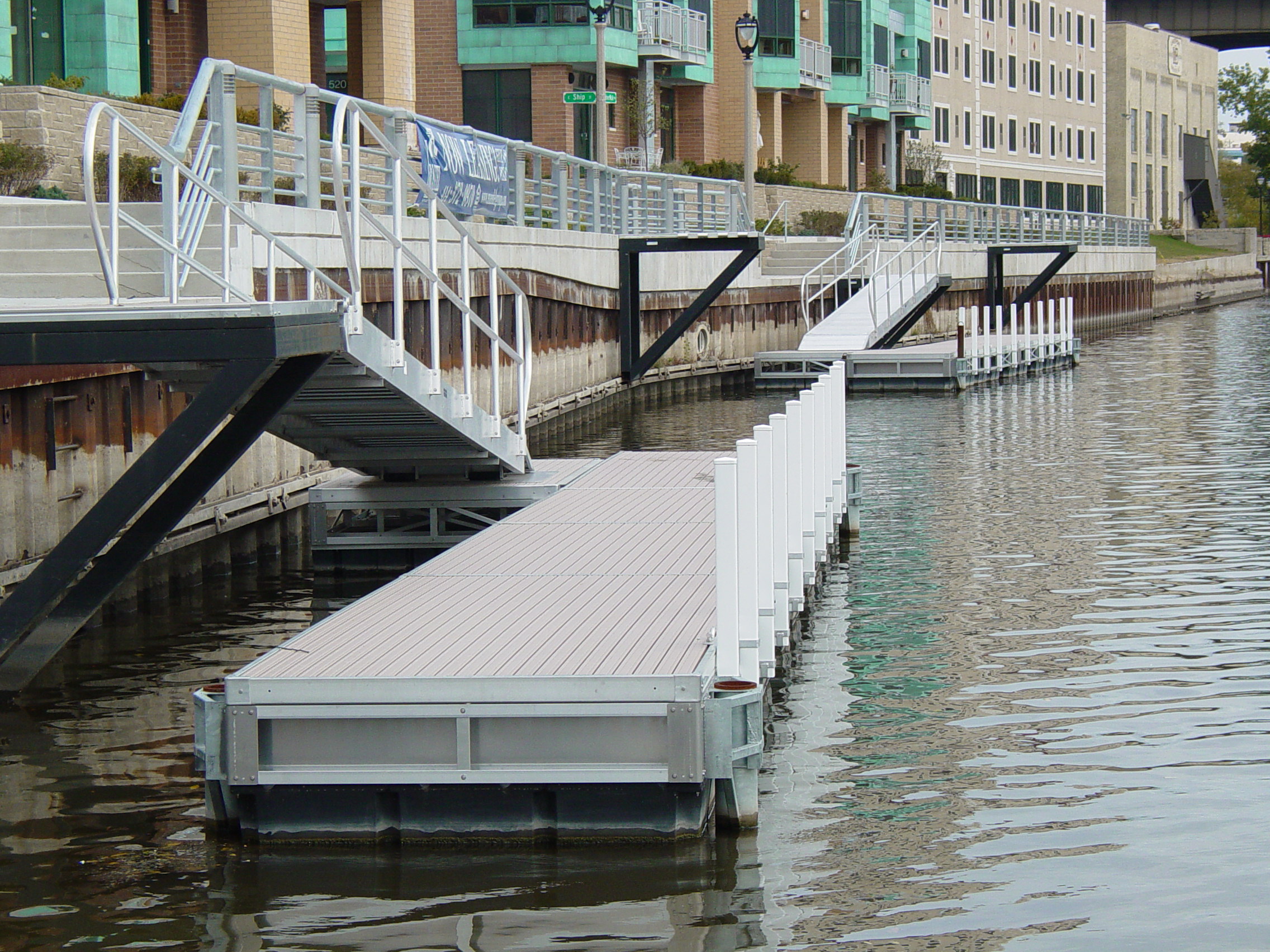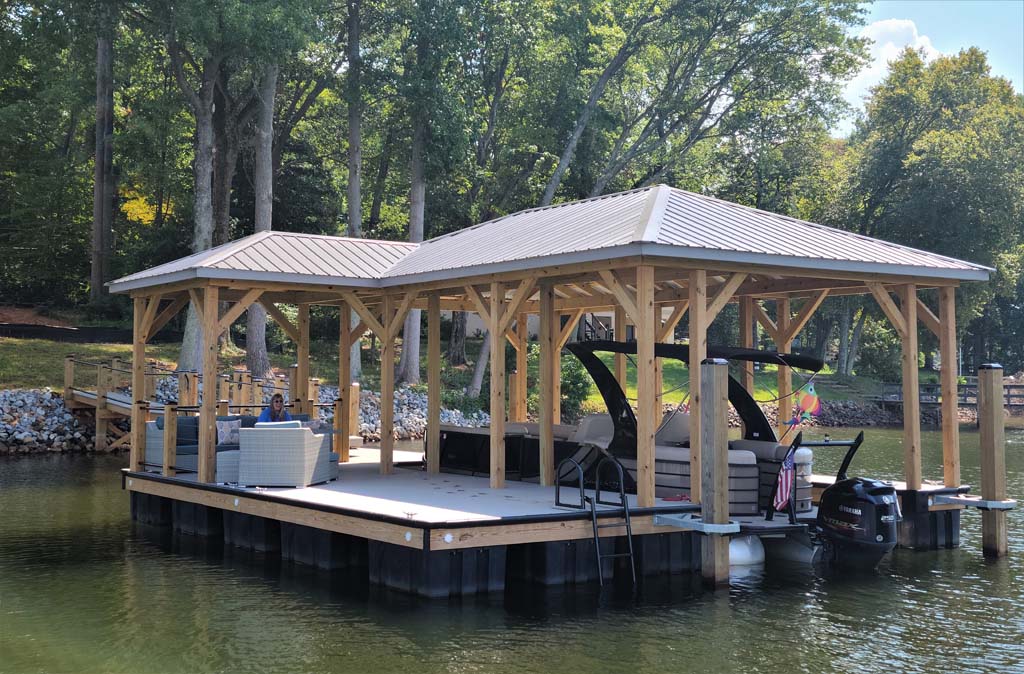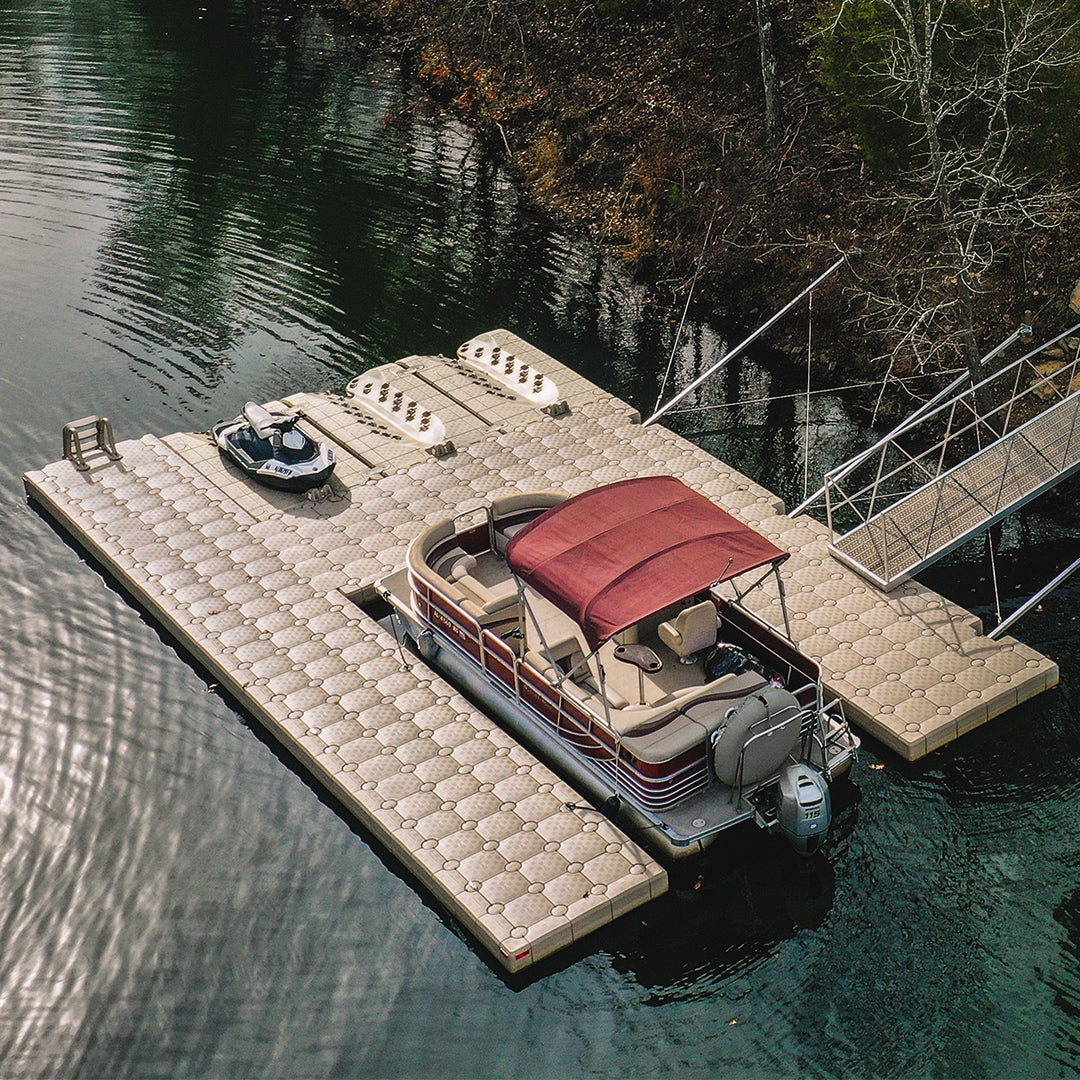How Floating Dock Company Experience Can Boost Your Beachfront Experience
How Floating Dock Company Experience Can Boost Your Beachfront Experience
Blog Article
Upgrade Your Waterfront With Sturdy Floating Docks
Upgrading your beachfront with long lasting floating docks can dramatically improve both functionality and aesthetics, giving a flexible service for numerous water tasks. These structures are made to adapt to fluctuating water degrees, ensuring safety and security and availability throughout the seasons. With a series of materials readily available, including low-maintenance alternatives and conventional timber, choosing the appropriate dock can match your individual style and fulfill useful demands. Comprehending the subtleties of installation and maintenance is critical for guaranteeing long life and performance. When making this financial investment?, what factors should you think about.
Advantages of Floating Docks
Floating docks offer a multitude of benefits that improve their appeal for numerous maritime applications. Unlike conventional fixed docks, floating docks rise and loss with the trend, ensuring regular availability for boats and boat regardless of ecological conditions.
In addition, floating docks are much easier to install and transfer, supplying flexibility for short-term or seasonal use. Their modular style enables personalization to fit specific requirements, whether for private marinas, property waterfronts, or industrial applications.
Additionally, floating docks produce marginal disturbance to the water setting, preserving regional ecological communities and decreasing the probability of erosion. They likewise give enhanced security and security for customers, as their buoyant nature uses an extra forgiving surface area than inflexible structures.
Moreover, floating docks can facilitate a diverse variety of tasks, such as angling, swimming, and recreational boating, making them a useful property for waterfront advancement. Their adaptability and usefulness make floating docks a preferred choice for a variety of marine jobs.
Picking the Right Products
Picking appropriate materials for floating docks is crucial to their durability, efficiency, and general performance. When picking materials, consider factors such as ecological direct exposure, maintenance needs, and architectural honesty. Common products include timber, plastic, aluminum, and composite alternatives, each offering unique benefits and negative aspects.
Timber, while visually pleasing, needs regular maintenance to stop rot and degeneration. Pressure-treated wood can enhance toughness, however it may still give in to water damage over time. Plastic drifts, usually made from high-density polyethylene, are immune to rust and require minimal maintenance, making them an eye-catching option for low-maintenance applications.
Aluminum is an additional sensible choice, known for its toughness and light-weight buildings. It is immune to rust and can withstand rough weather condition problems, although it might be a lot more expensive than various other materials. Compound materials combine the very best qualities of timber and plastic, using a resilient and low-maintenance option that mimics the look of wood without the connected drawbacks.
Inevitably, the choice of product ought to straighten with the intended usage, environmental factors to consider, and budget restrictions, guaranteeing a sturdy and functional floating dock that satisfies your specific requirements.
Installment Process Review
The successful setup of a drifting dock relies on cautious preparation and execution, guaranteeing that it runs effectively in its designated setting. The primary step entails assessing site problems, consisting of water depth, shoreline functions, and dominating climate patterns, which will inform the dock style and anchoring system.
Adhering to the website assessment, the next phase is to prepare the floating dock parts. This consists of assembling the frame, protecting drifts, and affixing any kind of necessary hardware. It is important to make sure that all links why not find out more are durable and waterproof to withstand marine conditions.
Once the dock is put together, the setup process begins with positioning the dock in the water. This can include a crane or other lifting devices, particularly for larger structures. Appropriate positioning is vital for performance and security.

Maintenance Tips for Longevity
Regular upkeep is crucial for guaranteeing the durability and ideal efficiency of a drifting dock. To accomplish this, start with routine examinations at least two times a year, concentrating on the honesty of the dock's structure, including the flotation protection devices and attaching hardware. Try to find signs of damages, wear, or rust, and resolve any problems without delay to avoid additional deterioration.
Cleaning up is one more critical aspect of upkeep. Get rid of particles, algae, and barnacles from the dock's surface to stop unsafe problems and keep aesthetic appeal. Utilize a light cleaning agent and a soft brush to prevent damaging the dock's products.
In addition, ensure that the dock is correctly anchored and protected to stand up to seasonal adjustments in water levels and weather. Check the anchoring system for stability and make adjustments as required.
Enhancing Your Outside Aesthetic
To produce a visually attractive outside blog here area, integrating a drifting dock can dramatically boost the total visual of your waterside building. Floating docks are not just practical however can likewise work as a striking prime focus that complements the natural environments - check over here floating dock builder. Available in various products and layouts, these docks can be personalized to match your home's architectural style and landscape
The enhancement of attractive aspects, such as integrated lights or fashionable barriers, even more elevates the dock's aesthetic charm. Consider using all-natural wood coatings, which mix perfectly with the environment, or choosing contemporary materials like light weight aluminum or composite decking that offer a streamlined, contemporary appearance.
Tactically placing planters or seating locations on or around the dock can create welcoming areas that encourage leisure and enjoyment of beachfront views. Additionally, integrating colors and appearances that harmonize with your landscape will certainly create a natural aesthetic throughout your exterior area.

Conclusion

Updating your beachfront with durable floating docks can considerably boost both functionality and appearances, offering a functional solution for different water tasks. Unlike traditional fixed docks, floating docks surge and fall with the tide, making certain consistent ease of access for watercrafts and boat regardless of environmental conditions.Choosing ideal products for floating docks is important to their durability, efficiency, and total effectiveness.Once the dock is set up, the setup procedure starts with placing the dock in the water.In summary, floating docks offer various advantages, including versatility to water degree modifications and a selection of product alternatives.
Report this page